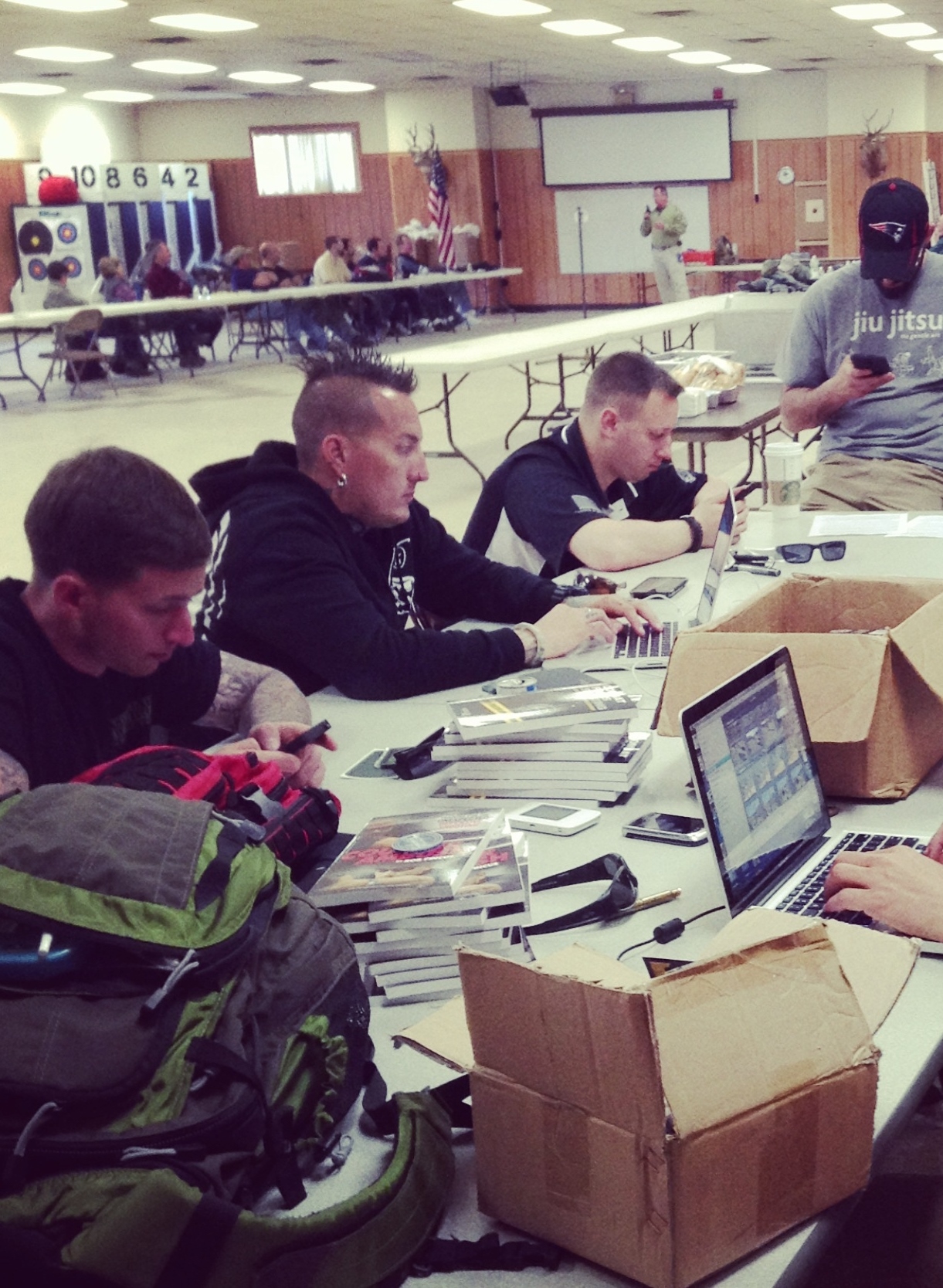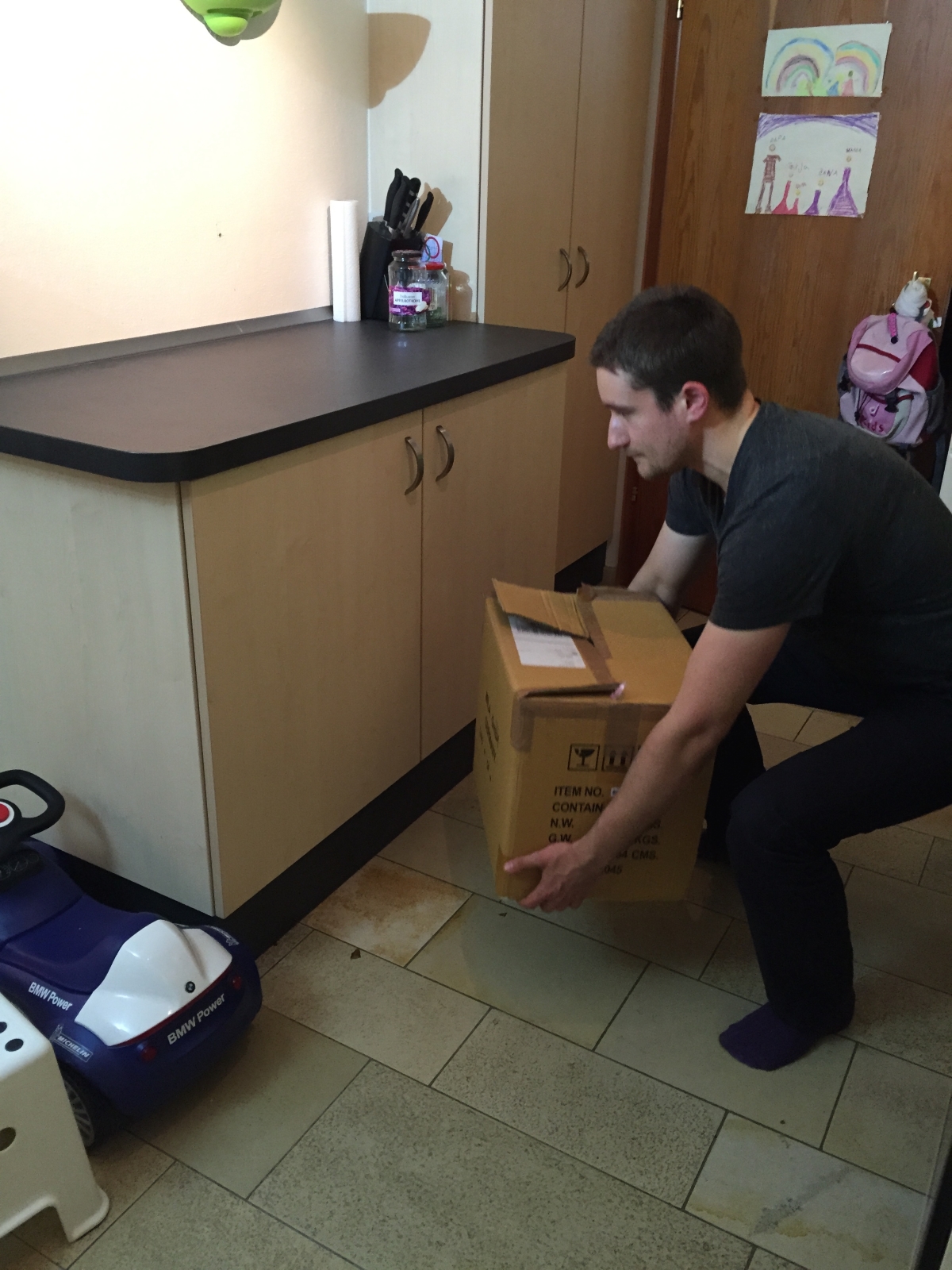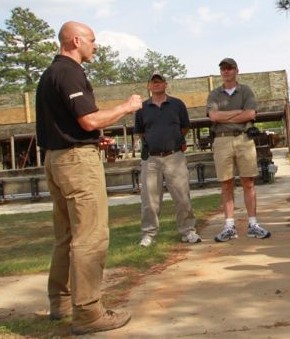Increase Your Awareness

Gather information about the areas you spend the most time in: your home neighborhood, where you work, and surrounding communities.
Photo: Caleb Causey

Proceed with caution if you find your car boxed in by two larger vehicles. Photo: Rich Nable
www.personaldefensenetwork.com
Research your “most likely attack” based on your age and gender, among other factors.
Photo: Grant Cunningham
Revisiting Situational Awareness

While the people in the foreground are clearly distracted and would likely be criticized by the “situational awareness” traditionalists, take a look at the people in the background. They are just as oblivious to their surroundings as they focus on the presenter who is addressing them.
Photo: author
Be Reasonably Fit

Can you lift your children onto (or down from) a top bunk? Photo: author
www.personaldefensenetwork.com
How about lifting a moderately heavy box from the floor to a counter top? These are examples of Functional Fitness. Photo: author
www.personaldefensenetwork.com
Kettlebells and dumbbells are effective at increasing your strength and power. Photo: Chris Fry
www.personaldefensenetwork.com


Enjoy the media productions
Good content, information that we need to re-digest every so often as a reminder. Self and our loved ones safety are primary as watchmen protectors.
Excellent advice on all counts...well balanced and thoughtful. The "trick" is to make these things into good habits...especially situational awareness!
Most of what you offer makes sense, but at 72 years old and after back surgery your physical fitness comments may need modification. We older fellows may have even more reason to carry, and still have enough sharpness to be situational aware, but have to think ahead regarding an active situation.
Spot on. Will share this with my wife. All in a family should be aware.
Very good information. Situational awareness is a must and being fit to defend yourself is true. Don’t become someone’s punching bag, fight back the best you can.
Great article Rob! I really liked how you broke this down. I particularly appreciated you touching on the importance of our intuition. I talk about not ignoring our intuition when I'm teaching my self-defense classes. It's great to see another person teaching similar key points to "functional awareness". I also appreciate you just telling it the way it is. We can't always be 100% completely aware and anticipate a threat, yet we can place importance in our training on how quickly one can respond to the threat for a positive outcome. Thanks Rob,
I look forward to the next read. Good stuff. Stay vigilant!
Excellent article. Keep doing these job. Thanks for this
Excellent article and the depth and facets or knowing and understanding the predator and the mind set of situational awareness. Its so true with smart phones how less aware people really are and also the concept the " things like this only happen to other people". Physical fitness for defensive is also an important factor if someone has difficulty touching their toes, Thanks for the great work you are doing.